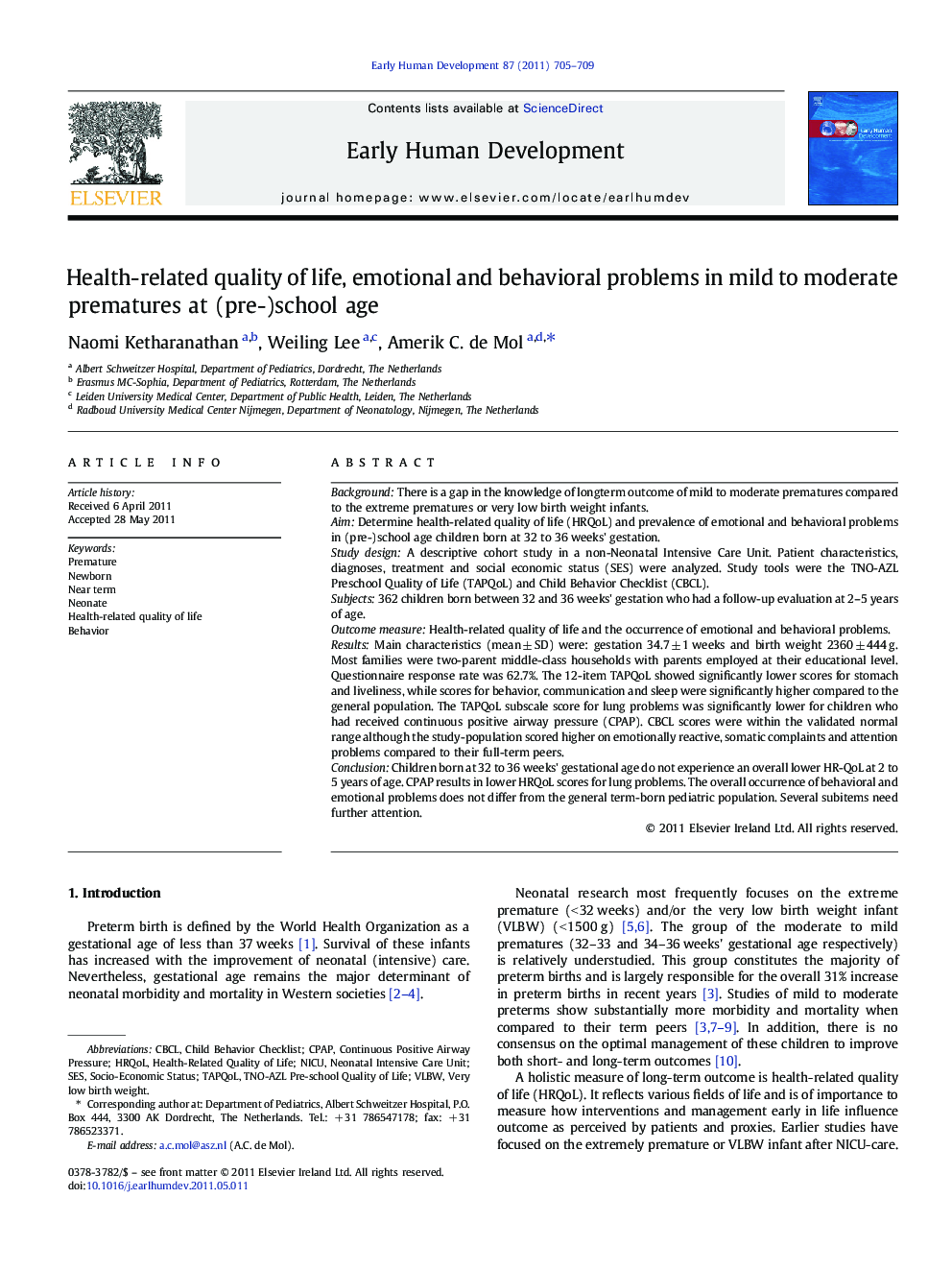| Article ID | Journal | Published Year | Pages | File Type |
|---|---|---|---|---|
| 3917402 | Early Human Development | 2011 | 5 Pages |
BackgroundThere is a gap in the knowledge of longterm outcome of mild to moderate prematures compared to the extreme prematures or very low birth weight infants.AimDetermine health-related quality of life (HRQoL) and prevalence of emotional and behavioral problems in (pre-)school age children born at 32 to 36 weeks' gestation.Study designA descriptive cohort study in a non-Neonatal Intensive Care Unit. Patient characteristics, diagnoses, treatment and social economic status (SES) were analyzed. Study tools were the TNO-AZL Preschool Quality of Life (TAPQoL) and Child Behavior Checklist (CBCL).Subjects362 children born between 32 and 36 weeks' gestation who had a follow-up evaluation at 2–5 years of age.Outcome measureHealth-related quality of life and the occurrence of emotional and behavioral problems.ResultsMain characteristics (mean ± SD) were: gestation 34.7 ± 1 weeks and birth weight 2360 ± 444 g. Most families were two-parent middle-class households with parents employed at their educational level. Questionnaire response rate was 62.7%. The 12-item TAPQoL showed significantly lower scores for stomach and liveliness, while scores for behavior, communication and sleep were significantly higher compared to the general population. The TAPQoL subscale score for lung problems was significantly lower for children who had received continuous positive airway pressure (CPAP). CBCL scores were within the validated normal range although the study-population scored higher on emotionally reactive, somatic complaints and attention problems compared to their full-term peers.ConclusionChildren born at 32 to 36 weeks' gestational age do not experience an overall lower HR-QoL at 2 to 5 years of age. CPAP results in lower HRQoL scores for lung problems. The overall occurrence of behavioral and emotional problems does not differ from the general term-born pediatric population. Several subitems need further attention.
